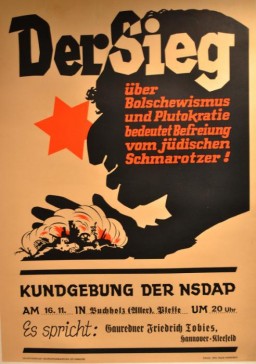You searched for: %EC%9D%B8%ED%84%B0%EB%84%B7%EB%B0%94%EC%B9%B4%EB%9D%BC%ED%95%84%EC%8A%B9%EB%B2%95%20ee47.top%20%EB%B0%94%EC%B9%B4%EB%9D%BC%20%EC%A2%8B%EC%9D%80%20%EA%B7%B8%EB%A6%BC%20%EB%9D%BC%EC%9D%B4%EB%B8%8C%EC%8A%A4%EC%BD%94%EC%96%B4%20%EC%9D%BC%EB%B3%B8%20%EC%B9%B4%EC%A7%80%EB%85%B8%20Eob
<< Previous | Displaying results 391-400 of 498 for "%EC%9D%B8%ED%84%B0%EB%84%B7%EB%B0%94%EC%B9%B4%EB%9D%BC%ED%95%84%EC%8A%B9%EB%B2%95%20ee47.top%20%EB%B0%94%EC%B9%B4%EB%9D%BC%20%EC%A2%8B%EC%9D%80%20%EA%B7%B8%EB%A6%BC%20%EB%9D%BC%EC%9D%B4%EB%B8%8C%EC%8A%A4%EC%BD%94%EC%96%B4%20%EC%9D%BC%EB%B3%B8%20%EC%B9%B4%EC%A7%80%EB%85%B8%20Eob" | Next >>
-
Beifeld album page with watercolors titled "Sports weeks" and "Quiet Don"
Artifact(top) "Watercolor entitled 'Sports weeks in Uryv, September 1942' in which a Russian tank attacks a Hungarian unit in Uryv."; (bottom) "Watercolor entitled 'Quiet Don: a detailed map of the Don River area' featuring images of dead soldiers, horses and spilled blood on a map of the Don River." [Photograph #58060]
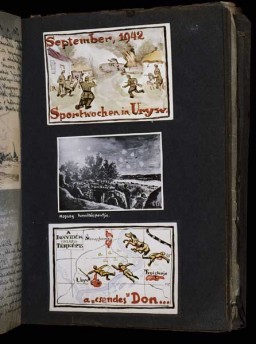
-
Samuel Soltz's visa
DocumentThe back of Samuel Soltz's citizenship papers illustrates the vast array of bureaucratic stamps and visas needed to emigrate from Europe in 1940–41. The stamp in the top left, dated August 21, 1940, represents a visa from the Japanese consul to Lithuania, Chiune Sugihara. Sugihara issued thousands of visas to enable Jews to escape.
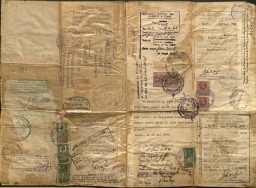
-
Renovating the courtroom to be used for the International Military Tribunal
PhotoRepairs and improvements are made to the courtroom where the International Military Tribunal trial of war criminals would be held. The holes in the walls at the top (when completed) housed radio commentators and public address operators. September 11, 1945.
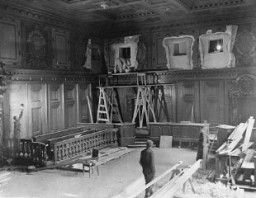
-
Display from "Der ewige Jude," a Nazi antisemitic exhibit
PhotoDisplay from "Der ewige Jude" (The Eternal Jew), a Nazi antisemitic exhibit which claimed that Jews heavily dominated the German performing arts. A phrase at the top of the display states "Shameless Entertainment." Berlin, Germany, November 11, 1938.
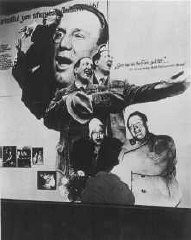
-
Portrait of a preschool class in Copenhagen, Denmark
PhotoPortrait of a preschool class in Copenhagen. Gus Goldenburger (top row, second from left) was one of the few Jewish students in the class. His family moved to Denmark from Czechoslovakia, fearing the rising tide of Nazism. When the Nazis planned to deport Danish Jewry, the Goldenburgers managed to escape to Sweden, where they remained until the end of the war. After the war, the Goldenburgers returned to Copenhagen. Photograph taken in Copenhagen, Denmark, 1938–1939.
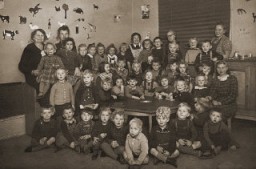
-
Portrait of a boarding school class in which a Jewish boy was hidden
PhotoClass photograph of students at the San Leone Magno Fratelli Maristi boarding school in Rome. Pictured in the top row at the far right is Zigmund Krauthamer, a Jewish child who was being hidden at the school. Rome, Italy, 1943–44.

-
Portrait of Norman Salsitz's family
PhotoIn this 1934 portrait of Norman Salsitz's family, Norman is seated in the front row (at left). In the top row, center, an image of one of Norman's brothers has been pasted into the photograph. This is seen by comparing the size of the brother's face with the others pictured. Pasting in images of family members who could not be present during family portraits was common practice and in some cases the resulting composite images are the only remaining visual records of family groups.

-
Werner Hegemann
ArticleWerner Hegemann was a city planner and author. The Nazis opposed his views of American architecture and German historical figures. His book was burned in 1933.
-
Gartenberg family portrait
PhotoFamily portrait of the Gartenberg family in Drohobycz, Poland. None of those pictured would survive the Holocaust. Photograph taken in 1930. Top row: Julius Gartenberg, Anna Fern, Bernard Klinger, Ona Fern and Izador Gartenberg. Lower row: Marcus Gartenberg, Hinda Gartenberg with her grandaughter Tony Schwartz on her lap, Sol Schwartz, and Ida Fern.

-
Poster for Nazi Party speech on Jewish Bolshevik threat
PhotoPoster for a meeting and speech about the Jewish Bolshevik threat against Germany sponsored by the local Nazi Party of East Hannover. Depicted is a silhouetted caricature of a Jewish man’s head in left profile, with a large, red Star of David beside him. The announcement at the top of the poster reads: "Victory over Bolshevism and plutocracy means being freed from the Jewish parasite!" Created ca. 1937–1940.
